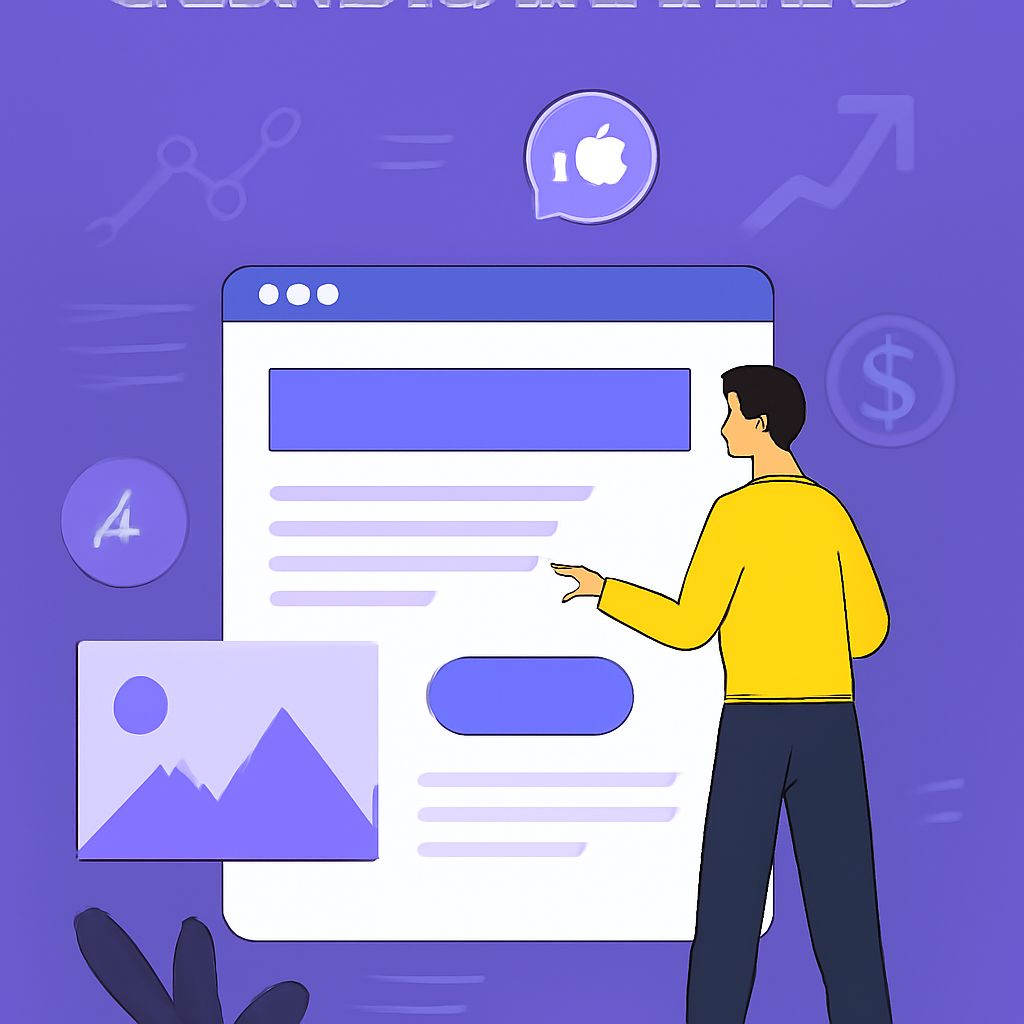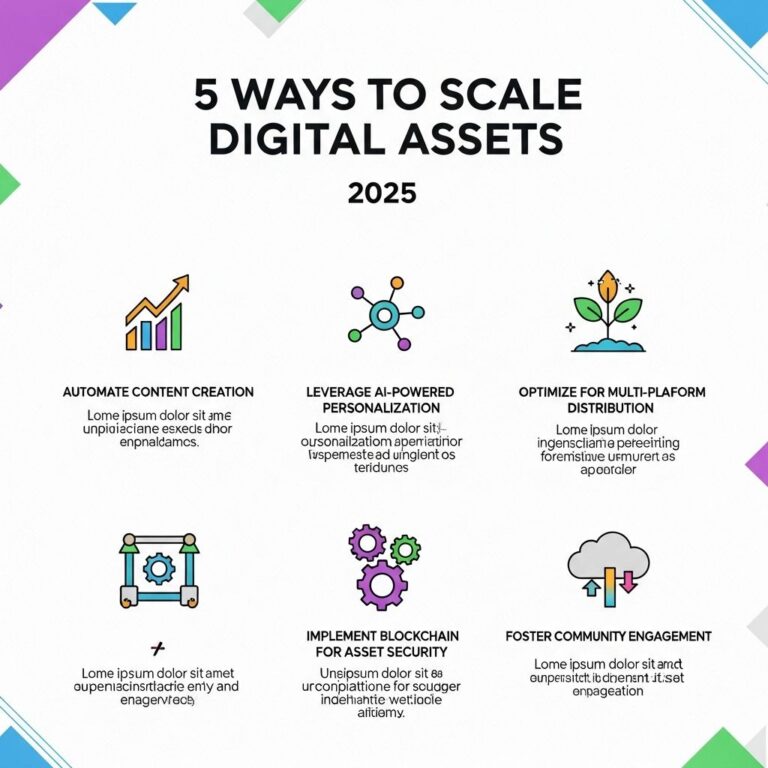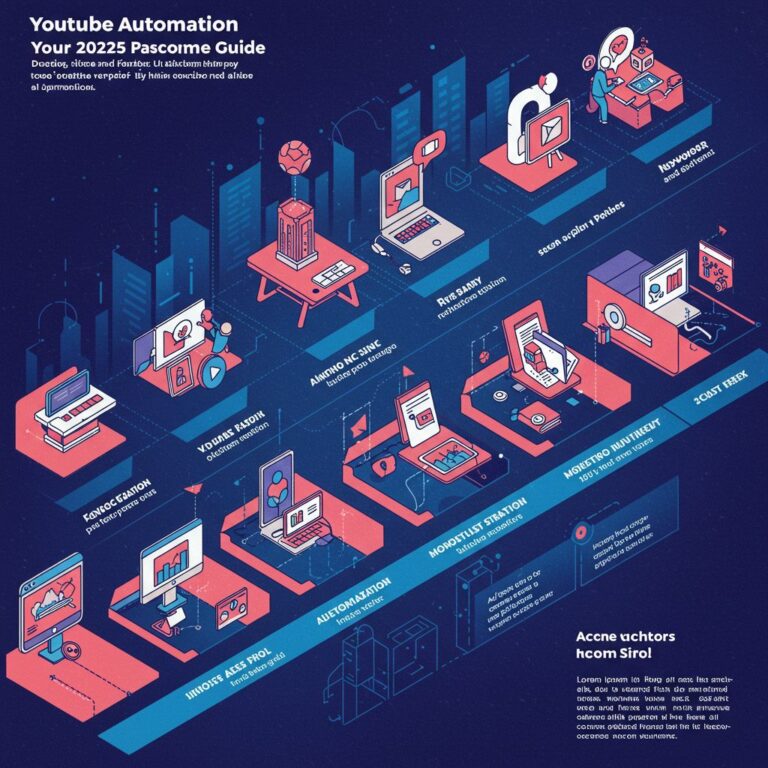Table of Contents
Introduction
In the digital age, the design of your landing page plays a crucial role in determining the success of your online marketing efforts. A well-crafted landing page not only captures the attention of potential customers but also drives them toward taking the desired action, whether that’s signing up for a newsletter, making a purchase, or downloading a resource. As we move into 2025, understanding the latest trends and best practices in landing page design is more important than ever for boosting your conversions.
Understanding the Basics of Landing Pages
Before diving into the specifics of design, it’s essential to have a clear understanding of what a landing page is and its purpose. A landing page is a standalone web page created specifically for a marketing or advertising campaign. Unlike regular web pages that drive traffic to the main website, landing pages are focused on a single goal, making them a powerful tool for conversion optimization.
Key Characteristics of Effective Landing Pages
- Focused Content: Every element on the page should support the primary goal, whether it’s generating leads or selling a product.
- Clear Call to Action (CTA): The CTA must be prominent and compelling, guiding users on the next step to take.
- Minimal Distractions: An effective landing page should eliminate unnecessary elements that could divert attention away from the CTA.
- Responsive Design: With the increasing use of mobile devices, landing pages must be mobile-friendly to cater to all users.
Trends in Landing Page Design for 2025
1. Minimalist Design
As we look ahead, minimalist design continues to thrive. Clean layouts with ample white space help guide users’ eyes to the most important information without overwhelming them. This approach not only enhances usability but also maintains a professional look.
2. Personalization
In 2025, personalization will be at the forefront of landing page design. Tailoring content based on user demographics, behavior, or previous interactions can significantly increase engagement. Using dynamic content that adapts to the visitor can create a more relevant experience, boosting conversions.
3. Interactive Elements
Interactive elements, such as quizzes, polls, or calculators, can engage users in a deeper way. Such features encourage visitors to spend more time on the page, increasing the likelihood of conversion. Additionally, they provide valuable data that can be used for further optimization.
4. Video Content
Video continues to dominate online content consumption. Incorporating video into landing pages can dramatically increase engagement rates. Whether it’s a product demo, testimonial, or introductory video, using motion can convey information more effectively than text alone.
5. Enhanced User Experience (UX)
Prioritizing UX in landing page design is essential for 2025. Fast loading times, intuitive navigation, and clear visual hierarchies contribute to a seamless experience that retains users. Tools like A/B testing and heatmaps should be utilized to assess where users interact most and make adjustments accordingly.
Best Practices for Landing Page Design
1. Crafting a Compelling Headline
Your headline is the first thing visitors see when they land on your page. It should capture attention immediately and convey the core value of your offering. Effective headlines often include the benefits of the product or service, making it clear why visitors should stay and explore.
2. Utilizing High-Quality Images
Images play a significant role in landing page design. Using high-quality, relevant images can enhance the overall appeal of the page. Consider incorporating images that illustrate the benefits of your product or real-life scenarios where it can be used.
3. Strong Call to Action (CTA)
The CTA should be clear, actionable, and visually distinct from the rest of the page. Use contrasting colors and compelling language that encourages users to click. Phrases like “Get Started,” “Download Now,” or “Claim Your Free Trial” can drive conversions effectively.
4. Testimonials and Social Proof
Including testimonials, reviews, or logos of well-known brands that have used your service can build trust and credibility. Social proof alleviates doubts and can significantly influence a visitor’s decision to convert.
Optimizing Your Landing Page for Conversions
1. A/B Testing
One of the most effective ways to optimize your landing page is through A/B testing. By creating two versions of your landing page and directing traffic to both, you can determine which version performs better. Test various elements, including headlines, images, CTA placements, and overall layouts.
2. Analytics and Tracking
Implementing robust analytics tools is essential for understanding how users interact with your landing page. Track metrics such as bounce rates, conversion rates, and user behavior to identify areas needing improvement.
3. Load Times
Page speed is critical; slow loading times can lead to high bounce rates. Optimize images, reduce redirects, and utilize caching to improve load times. Aim for a loading time of under three seconds for optimal user experience.
Landing Page Design Examples
| Website | Design Element | Conversion Strategy |
|---|---|---|
| Dropbox | Simple, clean layout with a powerful headline | Focus on benefits to encourage sign-ups |
| Airbnb | Personalized recommendations | Engagement through relevance and targeted offers |
| Shopify | Strong visuals with clear CTAs | Highlighting success stories to build credibility |
Conclusion
As we advance into 2025, mastering landing page design is essential for businesses looking to optimize conversions and drive growth. By understanding the fundamentals, incorporating current trends, and following best practices, you can create landing pages that not only attract visitors but also convert them into loyal customers. The key lies in continuous testing and optimization to ensure your landing pages remain effective and relevant in an ever-evolving digital landscape.
FAQ
What is a landing page and why is it important for conversions?
A landing page is a standalone web page designed specifically for a marketing or advertising campaign, aimed at converting visitors into leads or customers. It is important for conversions because it focuses on a single objective, minimizing distractions and guiding visitors towards a call to action.
What are the key elements of an effective landing page design?
Key elements of an effective landing page design include a compelling headline, persuasive copy, clear call-to-action buttons, engaging visuals, and a user-friendly layout. These elements work together to capture attention and encourage conversions.
How can I optimize my landing page for mobile users?
To optimize your landing page for mobile users, ensure it has a responsive design, fast loading times, easy navigation, and large, clickable buttons. Additionally, simplify your content to make it easy to read on smaller screens.
What role do A/B tests play in landing page optimization?
A/B tests play a crucial role in landing page optimization by allowing you to compare two versions of a page to see which one performs better. This data-driven approach helps you make informed decisions to enhance user experience and boost conversion rates.
How often should I update my landing page for better performance?
You should update your landing page regularly to reflect changes in your audience’s preferences, trends in your industry, and insights gained from analytics. A good practice is to review and refresh your landing page at least every few months.
What metrics should I track to measure landing page success?
To measure landing page success, track metrics such as conversion rate, bounce rate, average time on page, click-through rate, and user engagement. These metrics provide insights into how well your landing page is performing and areas that may need improvement.









